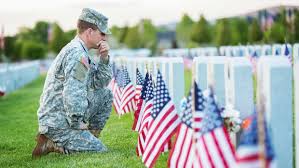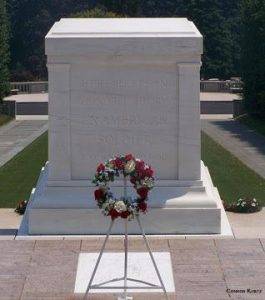Remembering America’s War Heroes
America has a long history of military members who have shown extraordinary courage, with many willingly giving their lives to secure the freedoms our nation enjoys, freedoms we often take for granted. On Memorial Day (originally known as Declaration Day) we honor the sacrifice of these brave men and women.
Three years after the Civil War ended, on May 5, 1868, the head on an organization of Union veterans — the Grand Army of the Republic (GAR) — established Declaration Day as a time for the nation to decorate the graves of the war dead with flowers. Major General John A. Logan declared that Declaration Day should be observed on May 30. It is believed that date was chosen because flowers would be in bloom all over the country.
The first large observance was held that year at Arlington National Cemetery, across the Potomac River from Washington, D.C.
The ceremonies centered around the mourning-draped veranda of the Arlington mansion, once the home of General Robert E. Lee. Various Washington officials, including General and Mrs. Ulysses S. Grant, presided over the ceremonies. After speeches, children from the Soldiers’ and Sailors’ Orphan Home and members of the GAR made their way through the cemetery, strewing flowers on both Union and Confederate graves, reciting prayers and singing hymns.
Local Observances Claim To Be First:
Local springtime tributes to the Civil War dead already had been held in various places. One of the first occurred in Columbus, Mississippi, April 25, 1866, when a group of women visited a cemetery to decorate the graves of Confederate soldiers who had fallen in the battle at Shiloh. Nearby were graves of Union soldiers, neglected because they were the enemy. Disturbed at the sight of the bare graves, the women placed some of their flowers on those graves, as well.
Today, cities in the North and the South claim to be the birthplace of Memorial Day in 1866. Both Macon and Columbus, GA, claim the title, as well as Richmond, VA. The village of Boalsburg, PA, claims it began there two years earlier. A stone in a Carbondale, IL, cemetery carries the statement that the first Decoration Day ceremony took place there on April 29, 1866. Carbondale was the wartime home of General Logan. Approximately 25 places have been named in connection with the origin of Memorial Day, many of them in the South where most of the war dead were buried.
Official Birthplace Declared:
In 1966, Congress and President Lyndon Johnson declared Waterloo, NY, the “birthplace” of Memorial Day. There, a ceremony on May 5, 1866, honored local veterans who had fought in the Civil War. Businesses closed and residents flew flags at half-staff. Supporters of Waterloo’s claim say earlier observances in other places were either informal, not community-wide or one-time events.
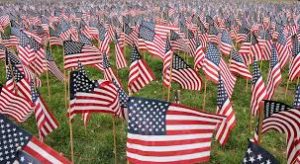
Memorial Day — Remember, Respect, Honor
By the end of the 19th century, Memorial Day ceremonies were being held on May 30 throughout the nation. State legislatures passed proclamations designating the day, and the Army and Navy adopted regulations for proper observance at their facilities.
It was not until after World War I, however, that the day was expanded to honor those who have died in all American wars.
World War II (1941-1945) was an especially deadly war, with over 400,000 Americans being killed in famous military engagements such as the Battle of the Bulge, D-Day, Guadalcanal, Iwo Jima, and many other battles. Each life lost, whether in a major battle or an obscure battle, helped win peace and end tyranny. There were many heroes in that war, sung and unsung.
In 1971, Memorial Day was declared a national holiday by an act of Congress, though it is still often called Declaration Day. It was then also placed on the last Monday in May, as were some other federal holidays.
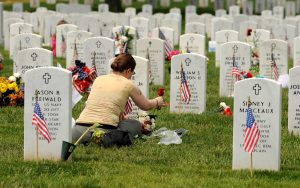
Memorial Day — Arlington National Cemetery
The crowd attending the first Memorial Day ceremony at Arlington National Cemetery was approximately the same size as those that attend today’s observance, about 5,000 people. Then, as now, small American flags were placed on each grave — a tradition followed at many national cemeteries today. In recent years, the custom has grown in many families to decorate the graves of all departed loved ones.
To ensure the sacrifices of America’s fallen heroes are never forgotten, in December 2000, the U.S. Congress passed and the president signed into law “The National Moment of Remembrance Act,” Public Law 106-579, creating the White House Commission on the National Moment of Remembrance. The commission’s charter is to “encourage the people of the United States to give something back to their country, which provides them so much freedom and opportunity” by encouraging and coordinating commemorations in the United States of Memorial Day and the National Moment of Remembrance.
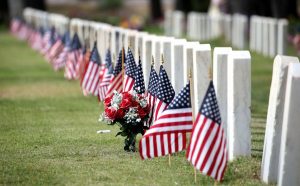
Memorial Day — We thank you for your service, courage, and sacrifice for freedom
The National Moment of Remembrance encourages all Americans to pause wherever they are at 3:00 p.m. local time on Memorial Day for a minute of silence to remember and honor those whom have died in service to the nation. As Moment of Remembrance founder Carmella La Spada states: “It’s a way we can all help put the memorial back in Memorial Day.”
This Memorial Day, as we remember the military members who lost their lives in battle, let us honor the courage they showed.

